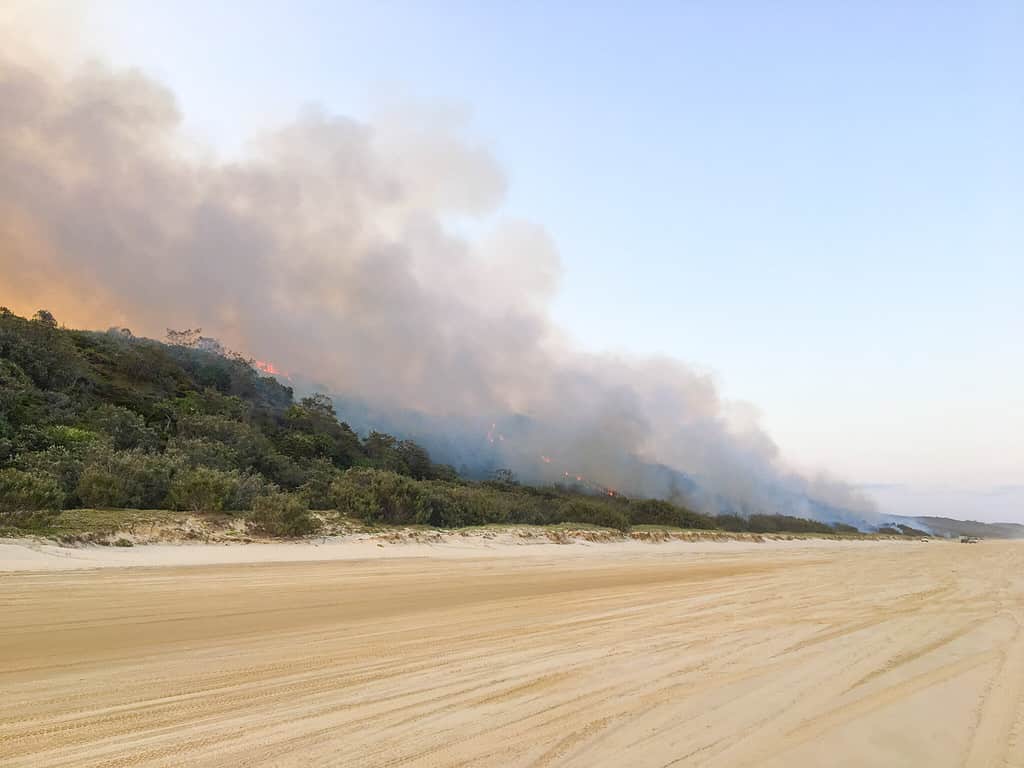Scientists have traditionally relied on sediment records from lakes to reconstruct records of previous fires. But what do you do with dryland regions that don’t have lakes? Traditionally, there was not much information regarding previous fires in these areas. However, a new study has found that sand dunes can also serve as a repository of fire history.

The study is the first one to look at sedimentary records preserved in foot-slope deposits of sand dunes for this purpose. The research team studied four sand dunes at the Cooloola Sand Mass in Australia, a large coastal dune field.
Australia is one of the world’s most fire-prone landscapes, with extensive areas without lakes or ponds to collect sedimentary records from.
The researchers wanted to prove that sand dune deposits could be used to build fire histories. “Many fire and paleoclimate records are located where there’s a lot of water bodies such as lakes, peats, and bogs. Because of this, most global models really have a bias towards temperate regions,” study author Nicholas Patton said in a statement.
Sand dunes records
The Cooloola Sand Mass features massive sand dunes as high as 240 meters. These form along the coastline and gradually shift inland due to the force of the wind. Using a method called optically stimulated luminescence dating (OSL), the researchers found that the four dunes span the Holocene period, encompassing the last 12,000 years.
Once a dune reaches a stable state, where it ceases to grow and starts to slowly erode, the force of gravity comes into play. Gravity causes the sand and remnants of charcoal from local fires, which accumulate on the dune’s surface, to gather at the base. Over time, this sediment builds up, forming layers of charcoal from various fire events.
“We were digging soil pits at the base of the dunes and were seeing a lot of charcoal—more charcoal than we expected,” Patton said in a statement. “And we thought maybe we could utilize these deposits to reconstruct local fires within the area.”
The younger dunes (500 and 2,000 years old) had distinct layers of charcoal that represented individual fires, the researchers found. The steep slopes of these dunes buried each layer, preserving them separately. The older dunes (5,000 and 10,000 years old) had instead more gradual slopes, resulting in charcoal from different fires blending together.
As the four dunes offered localized fire histories within a radius of 100 meters, fire records varied to some extent. To validate their findings, the researchers compared their results with other fire records derived from lake and swamp deposits. Remarkably, their findings aligned with the regional records, revealing three periods of fire activity. This basically confirmed that dunes can be record-keepers of local fire events.
The researchers suggest that similar records likely exist in sand dunes worldwide, emphasizing the potential benefits of understanding regional fire history in areas like California and the Southwest US. Within these fire records, valuable information can be found not only about natural wildfires but also about the influence of human activities on fire regimes.
The study was published in the journal Quaternary Research.









